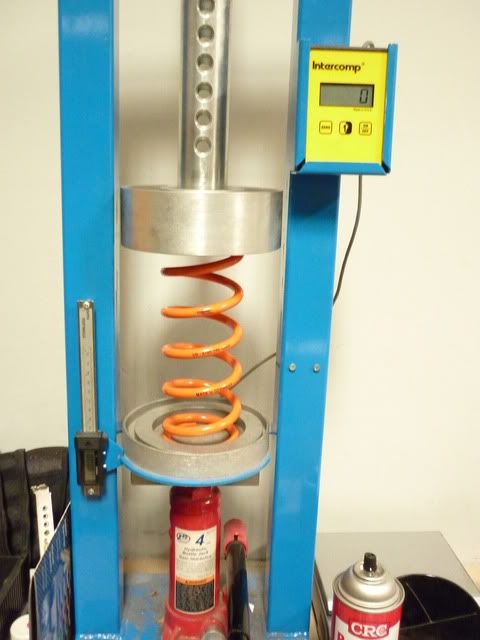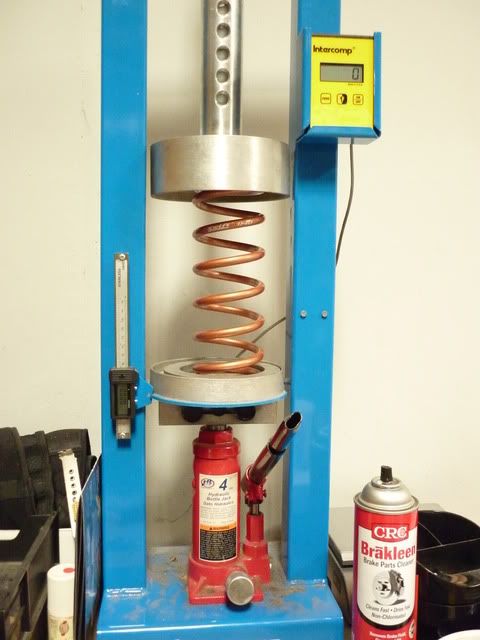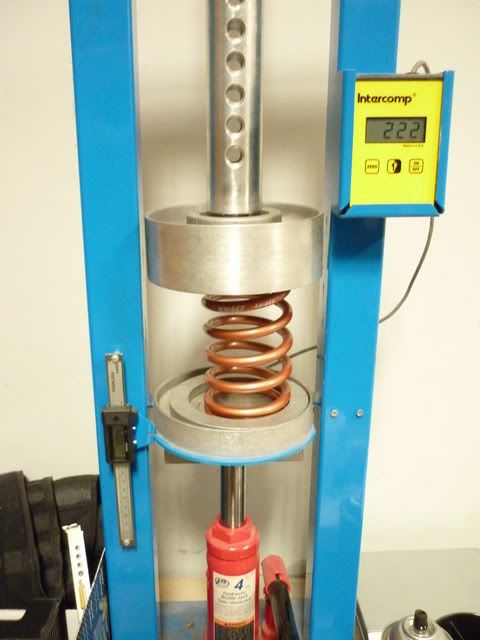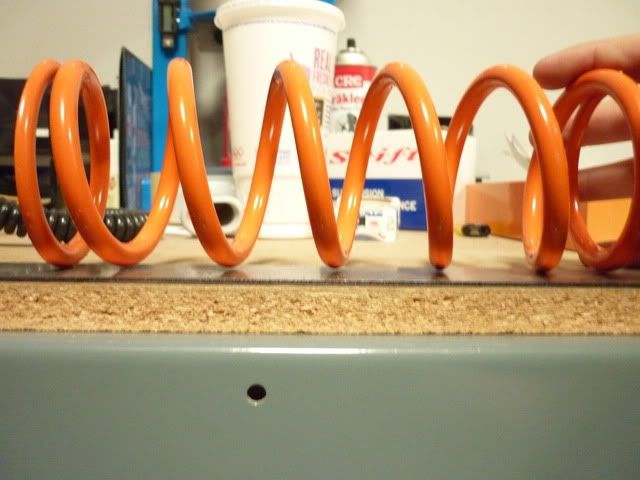Now as for the testing I happen to have a spare volkland spring lying around because I had a friend that wanted me to test it out. I also have a set of lightly used Swift springs in almost the same dimensions. The Volkland spring that i have is a
2.5" ID 9" length 180lb/inch spring.
The swift on the other hand is
2.5" ID 9" length 4kg/mm spring which equals to 223lb/inch spring.
Now just a little background information on this little test that I did. The lower the spring rate the spring rate changes and spikes throughout its compression is much less affected than a heavy spring rate. The spring rate spikes are obviously much more noticeable but the percentage increased are about the same. The reason I tested out such low rates though is because these springs are the only springs comparable that I have lying around.

Now there is a lot more to a spring than the spring rate but that is by far the easiest to see the quality and accuracy of the spring itself. So that is exactly what I tested first.

There is nothing bad I can really say about this spring, it is really hard to tell the accuracy of the spring rate because it is not too hard to be off on a spring rate so low. But as a 180lb/inch spring it is pretty dead on its spring rate all the way through its compression.
1st inch- 181
2nd inch- 183
3rd inch- 186 (already starting to hike up)
4th inch-250 (it was nearing coilbind so its natural to increase this much so you can judge this spring at this amount of compression)
Now with the swift spring.

again this spring is also a low spring rate, it's a little stiffer than the Volkland but it is nowhere near high enough to accurately tell how precise this spring is. But this is the spring rate that was recorded throughout its stroke
1st inch- 220
2nd inch- 223
3rd inch- 222
4th inch- 224
Now I took a picture of every inch of compression, I tested it several times through the different strokes of the springs and the numbers for both really consistent throughout their compressions. The pictures and the recorded numbers I decided to post up are numbers starting with zero preload.
These pictures posted below is where the Swift started to outshine the Volkland. This is at 3 inch of compression.


You can clearly see that the swift spring has a much larger sweet spot than the Volkland spring. You can also see that the Swift spring is much closer to the desired spring rate.
But this is not the only advantage to the spring.
Right after being put on the spring checker I remeasured the springs to see if there were any difference in length.


The Volkland spring was brand spanking new. With just a few compressions on the spring checker it had already sagged 1/16 of an inch.
the used Swift on the other hand was dead on at its height.
This was just a few minutes of compression on the spring checker. Now you can imagine what the spring would do after a few months of use with the weight of the car and the vibrations exposed to the spring.
Well Volkland springs are known to sag after a few race events in the real time racing. This is why I decided to measure it before and after the checking of the rates. I already knew the results before going into the test.
Also to show the craftmanship of these springs

^This picture was also taken before the dyno testing. Now all springs do slant a slight amount. They usually are within whatever the manufacturer specs are. This spring though is almost like an S shape which is something I only thought came with Megan springs. This was kind of disappointing to me.